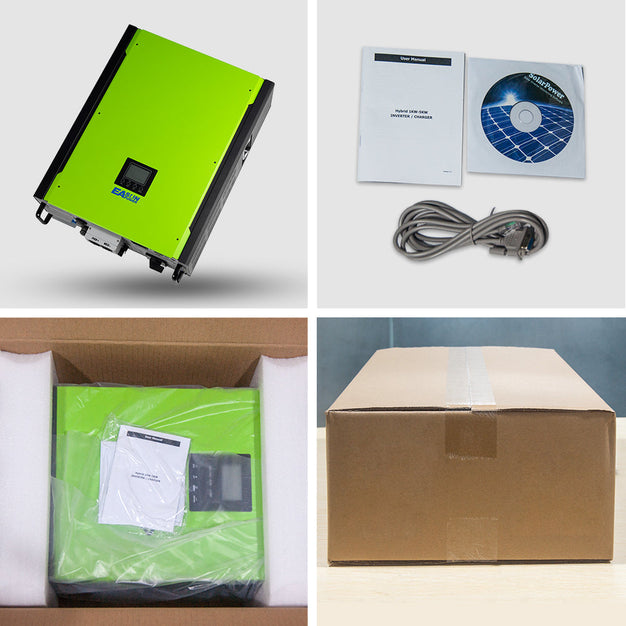Unlocking Solar Secrets: How MPPT Technology Supercharges Your Energy Harvest!
As the world increasingly shifts towards renewable energy sources, solar energy stands out as a vital player in the modern energy landscape. Harnessing the power of the sun has become more accessible and efficient, thanks to advancements in technology. One such innovation is the Maximum Power Point Tracking (MPPT) system, which significantly enhances the efficiency of solar panels. MPPT technology optimizes the energy output from solar panels by ensuring they operate at their maximum power point, regardless of environmental conditions. This article aims to delve into how MPPT works, its benefits, and why it is essential for maximizing energy output from solar panels.

Understanding MPPT Technology
MPPT technology is a sophisticated mechanism designed to optimize the power output of solar panels. At its core, MPPT works by continuously monitoring the output voltage and current of solar panels to determine the ideal operating point, known as the maximum power point. Unlike traditional solar power systems that operate at a fixed voltage, MPPT systems adjust the voltage to maximize energy production. This dynamic adjustment is crucial, especially since solar panel output can fluctuate widely due to varying sunlight conditions, temperature changes, and shading. By effectively tracking and adjusting to these changes, MPPT technology ensures that solar panels consistently operate at peak efficiency, making it a game-changer in the realm of solar energy.
How MPPT Works
The operational mechanism of MPPT systems is rooted in complex algorithms and real-time data processing. An MPPT controller uses sensors to measure the output voltage and current from the solar panels, calculating the power output in real time. By employing algorithms, the controller identifies the maximum power point and adjusts the electrical load accordingly. For instance, on a sunny day, the panels might produce a higher voltage, while a cloudy day could result in lower output. Environmental factors such as temperature and sunlight intensity play a significant role in this process, as they can impact the efficiency and power generation of solar panels. Through continuous monitoring and adjustment, MPPT systems can effectively harness the maximum potential energy from solar panels, adapting seamlessly to changing conditions.
Benefits of MPPT Systems
Incorporating MPPT technology into solar panel systems offers numerous advantages. One of the most significant benefits is increased energy efficiency. By ensuring that solar panels operate at their maximum power point, MPPT systems can enhance energy yield by up to 30%, compared to traditional systems. This increased efficiency translates into more energy being produced from the same amount of sunlight, leading to higher electricity generation and potentially lower energy bills. Additionally, MPPT systems can improve performance in partial shading scenarios, where some panels may be obstructed from direct sunlight. Over time, the cost savings from increased energy production can offset the initial investment in MPPT technology, making it a wise choice for homeowners and businesses alike.
MPPT vs. Non-MPPT Systems
When comparing MPPT systems to traditional solar energy systems that do not utilize this technology, the differences in energy production are striking. Non-MPPT solar systems typically operate at a fixed voltage and do not adjust to changing environmental conditions, leading to suboptimal energy generation. As a result, these systems can produce significantly less energy, especially during cloudy days or when some panels experience shading. In contrast, MPPT systems are designed to adapt and maximize energy output continuously, ensuring greater overall system performance and efficiency. This adaptability makes MPPT systems a superior choice for anyone looking to optimize their solar energy production.
Real-World Applications of MPPT Technology
MPPT technology has found successful applications across various scenarios, from residential setups to commercial installations and off-grid systems. In residential environments, homeowners have reported significant increases in energy production after installing MPPT systems, allowing them to meet their energy needs more effectively. For commercial applications, businesses can benefit from the enhanced efficiency of MPPT technology, leading to reduced operational costs and a lower carbon footprint. Off-grid systems, often used in remote locations, also greatly benefit from MPPT, as these systems can maximize energy harvest even when sunlight conditions are not ideal. Personal anecdotes from friends who have implemented MPPT systems highlight their satisfaction with the increased energy yield and overall performance, further illustrating the advantages of this technology.
Maximizing Solar Energy Efficiency with MPPT Technology
In summary, MPPT technology plays a crucial role in maximizing the efficiency of solar panels, ensuring that they operate at their best under varying conditions. By understanding how MPPT works and recognizing its benefits, including increased energy efficiency and cost savings, individuals and businesses can make informed decisions about their solar energy investments. As we continue to embrace renewable energy sources, considering MPPT systems for solar panels is a step towards a more sustainable and energy-efficient future.








